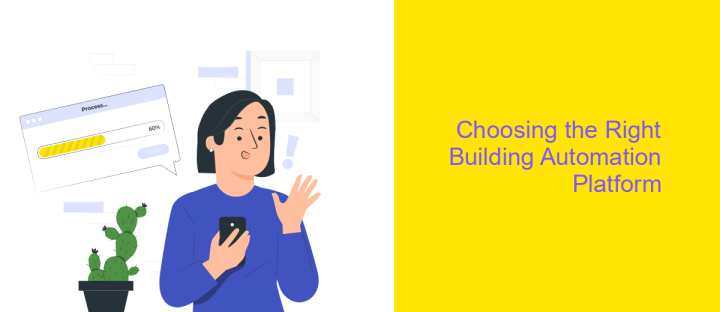Building Automation Platform
In today's rapidly evolving technological landscape, building automation platforms are revolutionizing the way we manage and interact with our built environments. By seamlessly integrating various systems such as lighting, HVAC, and security, these platforms enhance efficiency, comfort, and sustainability. This article delves into the core components, benefits, and future trends of building automation platforms, highlighting their pivotal role in shaping smarter, more responsive spaces for both residential and commercial applications.
Introduction
Building automation platforms are revolutionizing the way we manage and interact with our built environments. By integrating various systems such as lighting, heating, ventilation, and security, these platforms offer enhanced efficiency, comfort, and sustainability. They serve as a centralized hub that not only monitors but also optimizes building operations in real-time. This technological advancement is pivotal in addressing the growing demand for smart and sustainable buildings, catering to both commercial and residential needs.
- Improved energy efficiency through optimized resource use
- Enhanced occupant comfort with personalized settings
- Increased security via integrated surveillance systems
- Cost savings from reduced operational expenses
- Scalability to adapt to future technological advancements
As the demand for intelligent building solutions continues to rise, the role of building automation platforms becomes increasingly significant. They not only contribute to reducing the carbon footprint but also enhance the overall quality of life for occupants. By seamlessly integrating with existing infrastructure, these platforms provide a robust solution for modern building management challenges, paving the way for a more connected and efficient future.
Benefits of a Building Automation Platform

Implementing a Building Automation Platform offers numerous advantages, significantly enhancing the efficiency and sustainability of modern buildings. One of the primary benefits is energy optimization, as these platforms enable precise control over heating, ventilation, air conditioning, and lighting systems. By automating these functions, buildings can reduce energy consumption, resulting in lower utility bills and a smaller carbon footprint. Additionally, automation platforms improve occupant comfort by maintaining optimal indoor conditions, which can lead to increased productivity and satisfaction.
Another key benefit is the seamless integration of various building systems, which enhances operational efficiency. Platforms like ApiX-Drive facilitate this by enabling easy integration of different applications and services, ensuring that all systems work in harmony. This integration allows for centralized monitoring and control, enabling facility managers to quickly identify and address issues. Moreover, predictive maintenance capabilities help prevent equipment failures, reducing downtime and repair costs. Overall, a Building Automation Platform not only streamlines building operations but also supports sustainability goals, making it an invaluable asset for modern infrastructure.
Features and Capabilities of a Building Automation Platform

A Building Automation Platform (BAP) is an integrated system designed to optimize the control of a building's infrastructure. It enhances energy efficiency, improves comfort, and reduces operational costs by automating various building functions. Modern BAPs are equipped with advanced technologies that enable seamless communication between different systems within a building.
- Energy Management: Real-time monitoring and control of energy consumption to optimize usage and reduce waste.
- HVAC Control: Automated regulation of heating, ventilation, and air conditioning systems to maintain optimal indoor conditions.
- Lighting Control: Intelligent lighting systems that adjust based on occupancy and natural light availability.
- Security Systems: Integration of surveillance, access control, and alarm systems for enhanced safety.
- Remote Access: Ability to monitor and control building systems remotely via mobile devices or computers.
These features make a Building Automation Platform an essential component for modern buildings, providing a comprehensive solution for efficient building management. By integrating various systems into a single platform, BAPs offer enhanced control, improved operational efficiency, and significant energy savings, ensuring a sustainable and comfortable environment for occupants.
Choosing the Right Building Automation Platform

When selecting a building automation platform, it's crucial to consider several factors that align with your specific needs and objectives. A well-chosen platform enhances operational efficiency, reduces energy consumption, and improves occupant comfort.
Firstly, evaluate the platform's compatibility with existing systems and its ability to integrate with future technologies. This ensures the solution remains relevant and scalable as your building's needs evolve.
- Assess the platform's user interface for ease of use and accessibility.
- Consider the level of customization and flexibility offered.
- Check the platform's support and maintenance services.
- Ensure robust security features to protect data and systems.
- Review cost-effectiveness, including initial investment and long-term savings.
Finally, involve stakeholders in the decision-making process to ensure the platform meets the diverse needs of users, from facility managers to IT professionals. By thoroughly evaluating these aspects, you can select a building automation platform that not only meets current demands but also adapts to future challenges and opportunities.
Implementation and Integration of a Building Automation Platform
Implementing a building automation platform involves a systematic approach to integrating various systems and technologies within a building to enhance efficiency, comfort, and security. The process begins with a comprehensive assessment of the existing infrastructure, identifying key areas that can benefit from automation. Next, stakeholders must select a platform that best suits their needs, considering factors like scalability, compatibility, and user interface. Once a platform is chosen, the installation phase involves deploying sensors, controllers, and communication networks to facilitate seamless data exchange and control across different building systems.
Integration is a critical step, requiring careful planning to ensure all components work harmoniously. Utilizing services like ApiX-Drive can simplify this process by providing tools to connect disparate systems, allowing for real-time data synchronization and automation of complex workflows. ApiX-Drive’s user-friendly interface enables quick setup of integrations without extensive programming knowledge, making it an ideal solution for streamlining building operations. Continuous monitoring and optimization are essential to maintain the platform's performance, ensuring that the building operates at peak efficiency while adapting to changing needs and technologies.
FAQ
What is a Building Automation Platform (BAP)?
How does a Building Automation Platform improve energy efficiency?
Can a Building Automation Platform be integrated with existing building systems?
What are the benefits of using a Building Automation Platform?
How can I implement automation and integration in my building?
Time is the most valuable resource for business today. Almost half of it is wasted on routine tasks. Your employees are constantly forced to perform monotonous tasks that are difficult to classify as important and specialized. You can leave everything as it is by hiring additional employees, or you can automate most of the business processes using the ApiX-Drive online connector to get rid of unnecessary time and money expenses once and for all. The choice is yours!

